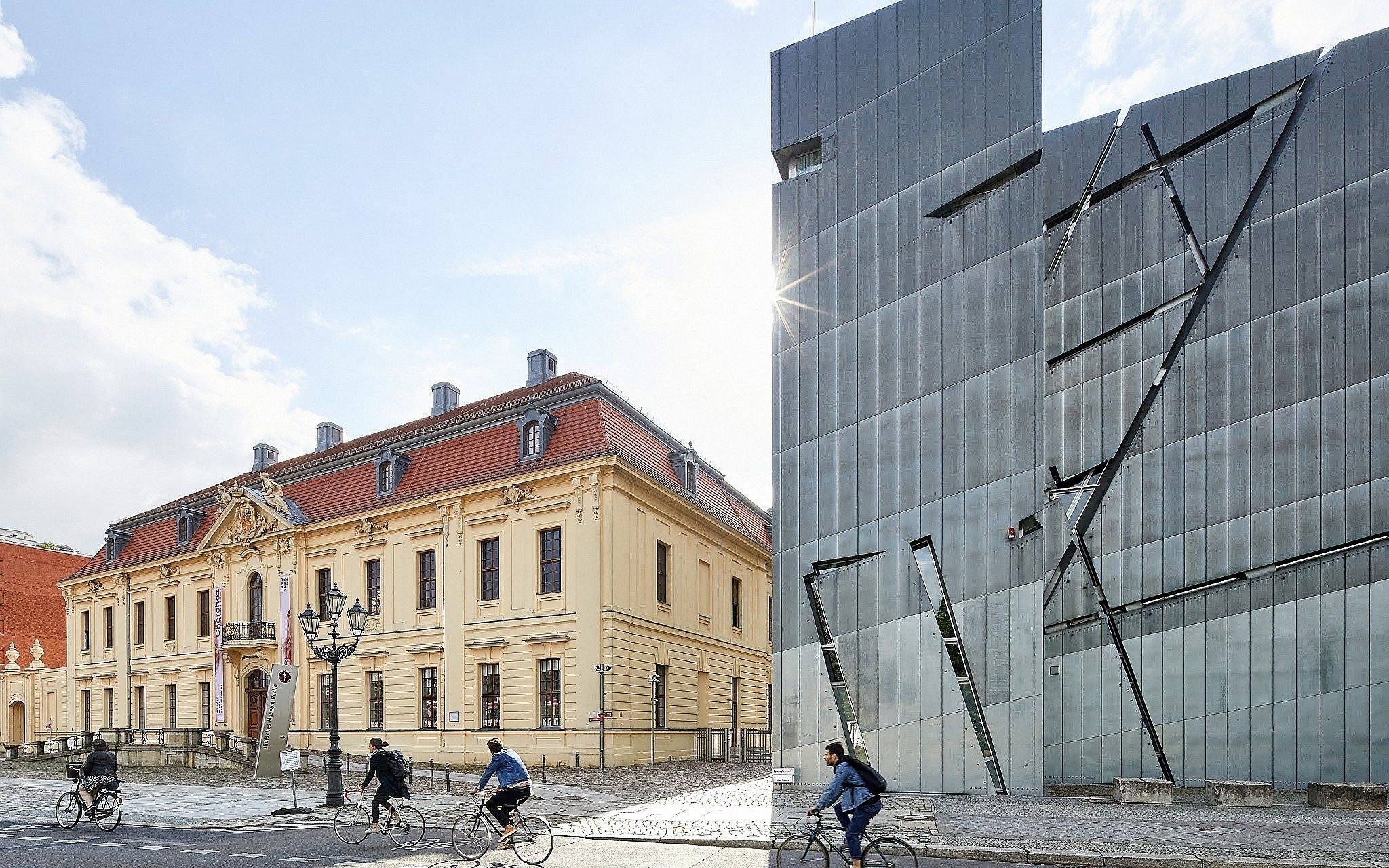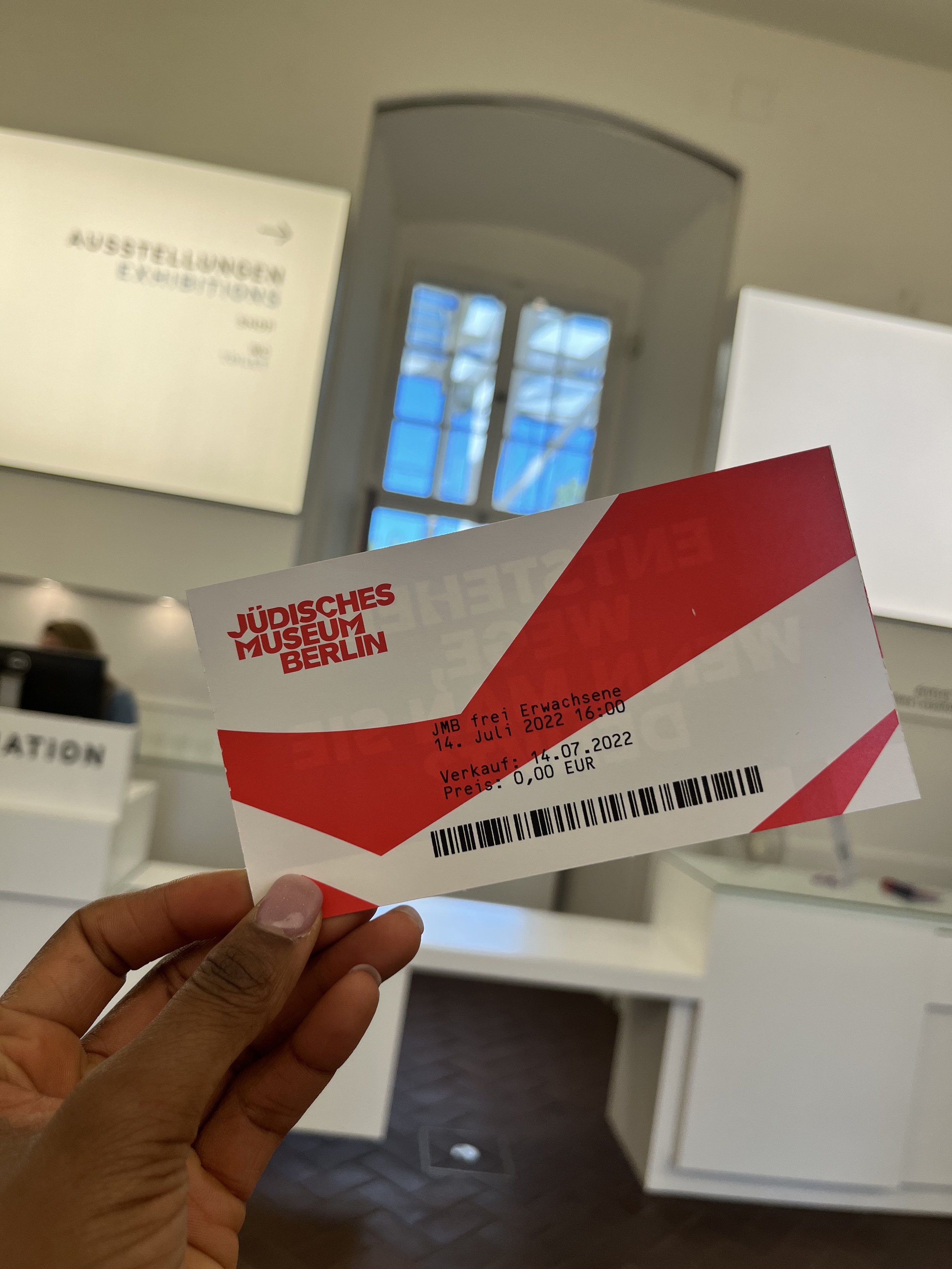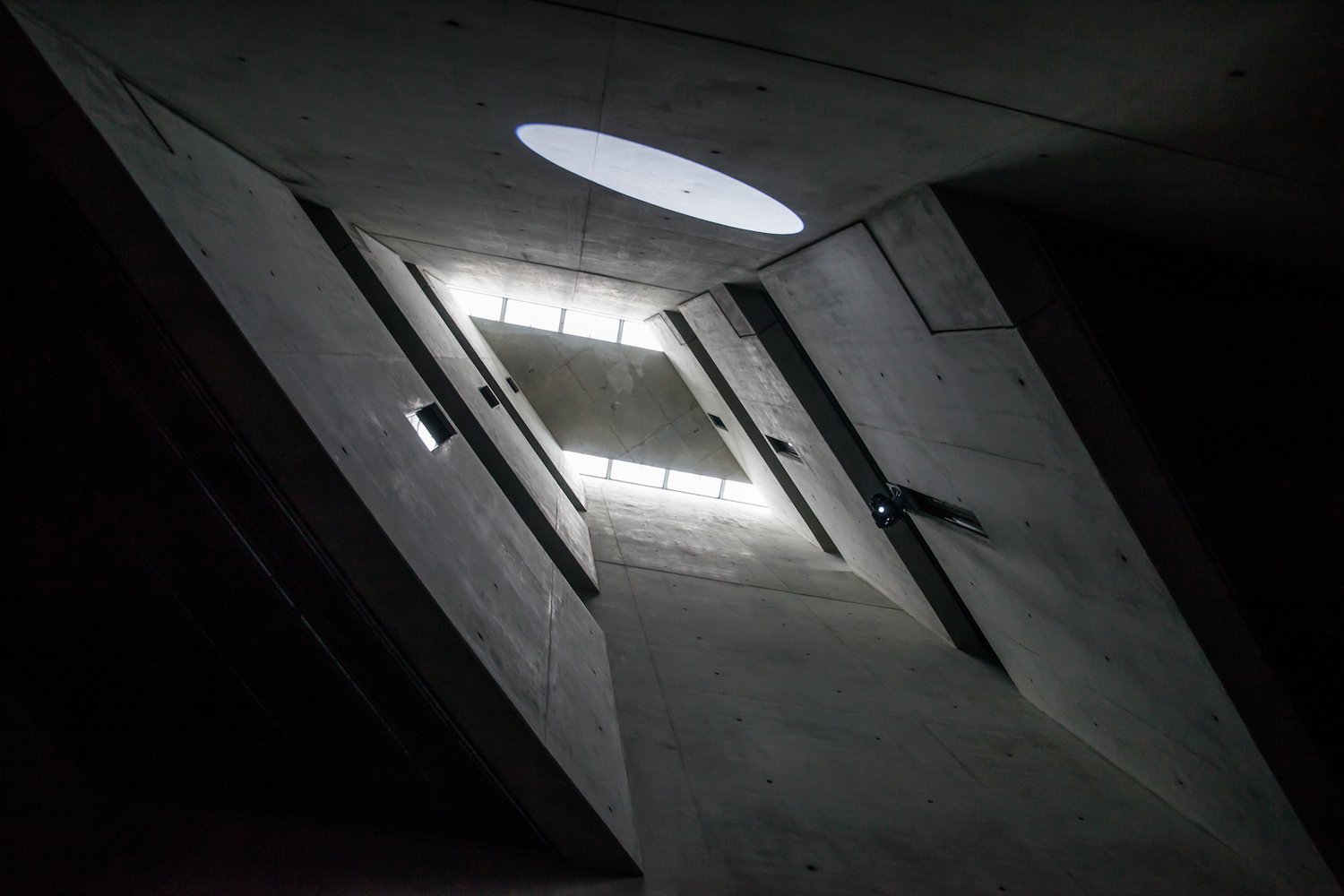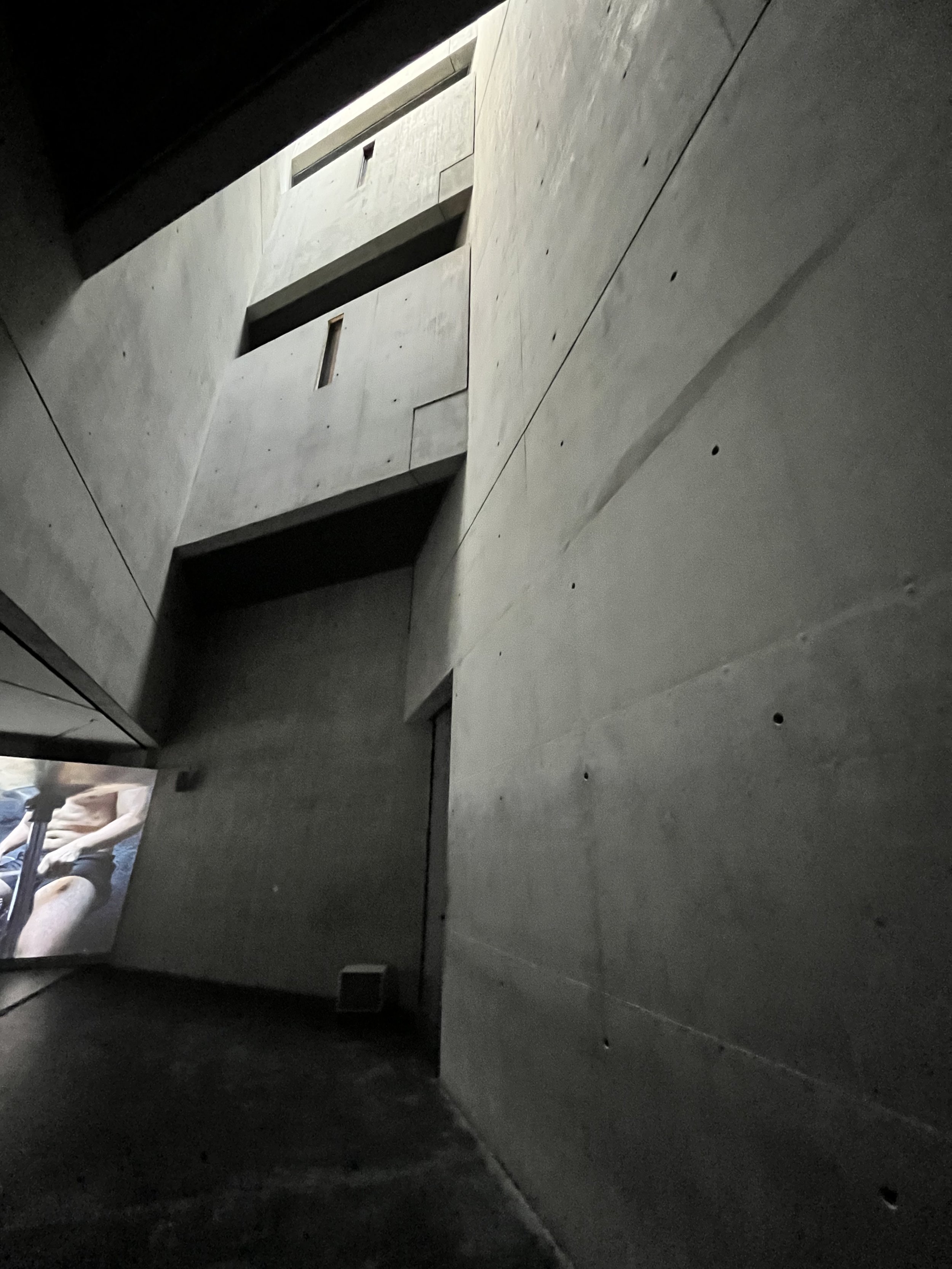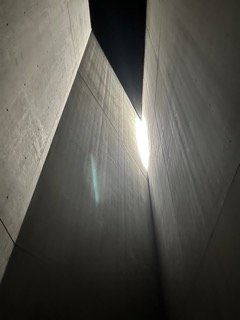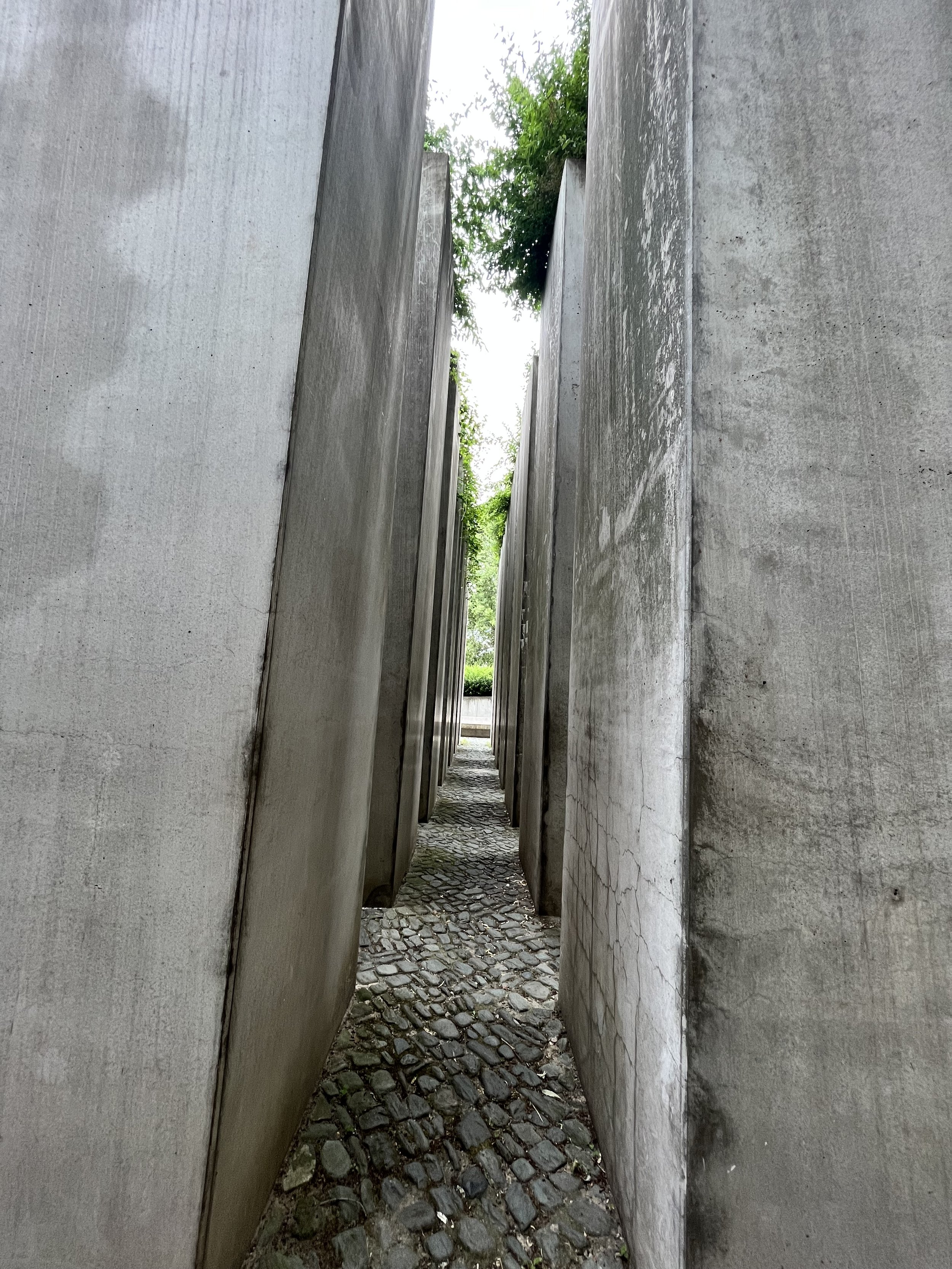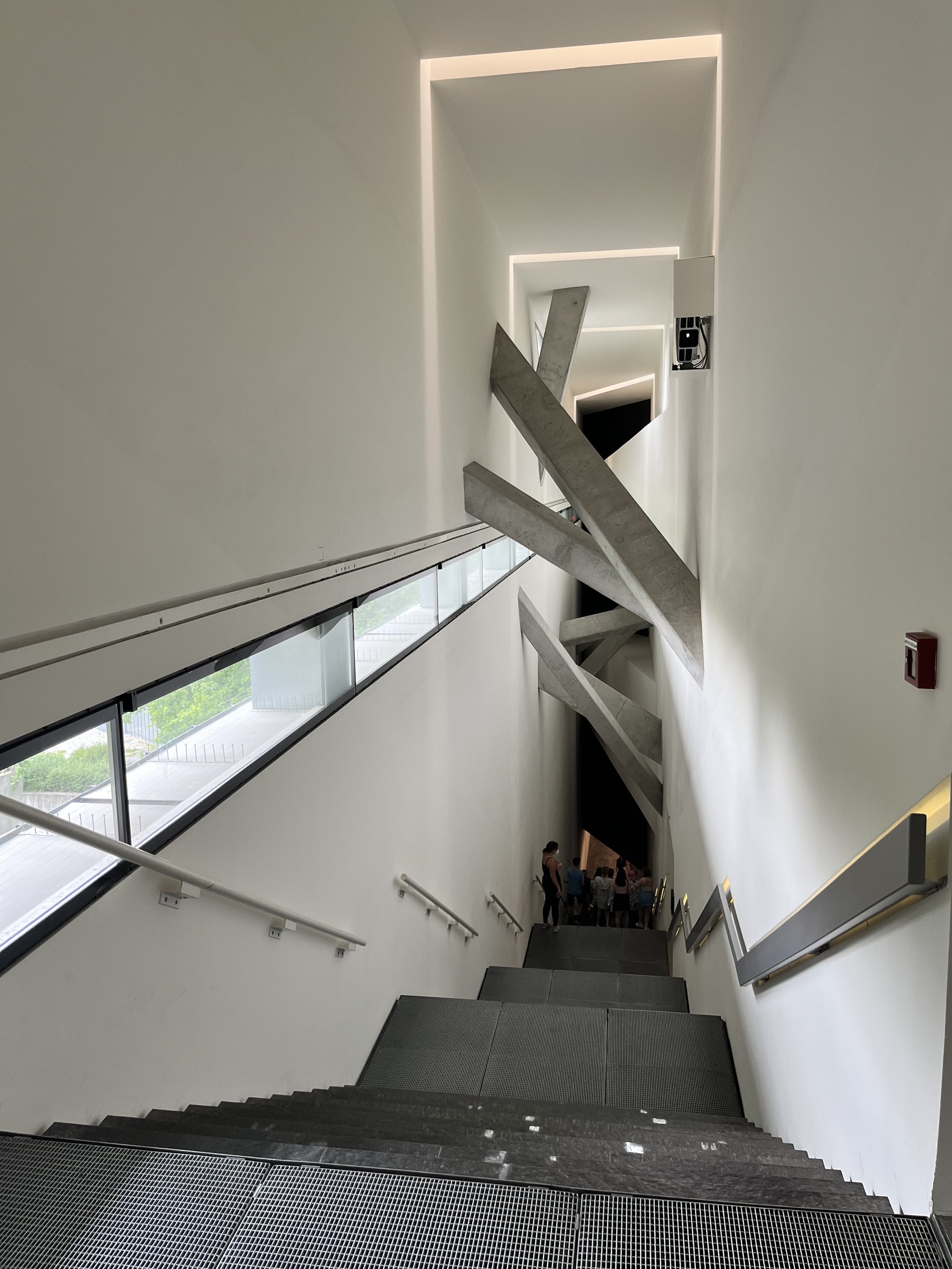Art & Reconciliation
Warning: This post is not for the faint at heart or reading….it takes time.
What does it mean for the people of a nation when their country reckons with the crimes it has committed? I’m not just talking about the people who the crimes were committed against, I’m talking about all people.
Do the people learn to love stronger?
Do the people unconsciously connect deeper?
Is the country more empathetic and in turns a true democratic state? Governed by the people for the people, with the people’s best interests at heart?
Welcome to Bre’Lynn Jade’s beautifully chaotic mind! These questions were top of mind for me as I interacted with the convicting, breathtaking, sensory design and exhibitions at the Jewish Museum of Berlin. I’m going to try my best not to give you a 30 minute history lesson but it is important that we recount the historical relationship between Germany and the Jewish population in Europe.
A Little History with Ms. Lombard
Germany committed horrific crimes against her Jewish-German population under the political rule of the Nazi Party and Adolf Hitler (no they aren’t the only European country to do so but that’s another article for another day).
The Nazi Party formally known as the National Socialist German Worker’s Party (NSDAP) came to power in 1933. It’s commonly known that Hitler was a tyrant and murder, but how he got to a position of great influence and institutionalization, no one really talks about. The short summary is that Hitler appealed to and exploited the lived experiences and desires of the German working class.
After losing WWI people mistrusted the ruling social democrats and blamed them for losing the war. If losing the trust of the people weren’t enough, under the Treaty of Versailles, Germany would be required to pay war reparations, disarm its military and give up colonial states it had imperialized. I mean Germany was down bad…and in the midst of all this chaos the Great Depression reared its head in 1929.
Then along comes Hitler, a man who has been entrenched in the German workers party and has one hell of a mouth piece (he was a great orator). Through his speech, he was able to not just capture the needs of the working class but appeal to those human needs and experiences by amplifying them through propaganda. Hitler “saw” a people who had been forgotten and gave meaning to this experience through a governmental organization that they had given up hope in. So now we have a large portion of the people feeling seen and heard!
We’ve had a pretty good illustration of this type of appeal in the 2016 Presidential election. Donald Trump appealed to key battleground states across middle and Southern America and it wasn’t his speech but the propoganda of MAGA.
As I sit here writing this post, my Yogi tea bag message says “ We all want to be understood, to be acknowledged, to be loved” and Hitler played on this.
By 1932 the Nazi vote amongst the people began to drop, BUT Hitler had positioned himself and the Nazi party well enough to be able to move institutional puzzles in government and was appointed Chancellor in January of 1933 by President Paul von Hindenburg. Now this is where shit gets real in the life cycle of institutions.
The role of chancellor in a country is to appoint staff to the president! The chancellor is like the brains behind the presidential cabinet; they will make appointments to certain roles like the department of defense and education. Instead of taming Hitler’s extremist ideologies with more mild party leader, as von Hindenburg intended, Hitler filled German politics with Nazi thinking folks like himself.
Needless to say Hitler was able to fuel the Nazi party by solidfying the Nazi position across the governmental structures. After a number of chaotic events in German parliament the lower parliament body signed an Enablement Act. The Enablement act gave permission for Hitler’s government to sign into law decisions independently of Parliament. Here we see how institutions begin to landlock themselves and create vacuumed powers.
Before you know it Hitler’s dictatorship had begun and with the use of art and culture he began to build onto the very thing that put him into power, the power of people minds. People’s beliefs were influenced by anti-semitic propaganda which became social norms and the regulation of government.
What we don’t like to mention in history classrooms is that the German government is just as guilty of the crimes committed against Jews as Hitler. The structure of the institution allowed Hitler to deliver his ideology of hate in masse. Right in line with the eugenics movement that created the racial divide in the Americas (and around the world) the movement of dehumanization of a particular group of people became the norm.
The Jewish museum of Berlin is not one to shy away from this dark story in German history. It actually counters the Semitic narrative by weaving the humanity of Jews into the fabric of German history in whole.
The Building Experience
From the outside, the museum is so unassuming, it has two personalities that illustrate the conflict and progression of Germany. The first building houses the atrium and guest services, it is a classical baroque museum structure.
Baroque is just a fancy term derived from Italy to describe a theatrical, Renaissance style of architecture. Think of a structure with marbled (or some form of stone) figures, typically White European women, draped in cloth with ballet buns and hella crown molding. It varies from the Greek influenced museums, which are more gaudy and bold in stature, like Brooklyn Museum or The MET that has hundreds of stairs leading up to the pillar guarded doors.
What used to be known as the “Kollegienhaus” historically housed the Berlin museum and invites us warmly into a light filled, open aired space from street level. But once you purchase your ticket off to the galleries you go where you are quickly transported into a more contemporary, minimalist building. Surrounded by concrete floors and walls, the grey and black tones transport visitors to a more sullen reality.
Architect Daniel Libeskind uses the building to immerse us in the darkness, light and immense struggle that was the Jewish experience in Germany post WWI. There are very few (if any) right angles in the building and everything is on a slanted incline, coming to a triangular point.
According to Libeskind the design of the building is called “Between the Lines”. “Between the Lines” physically creates a path that forces visitors to stand at the junction of Jewish exile (The Axis of Exile), the Holocaust (Axis of the Holocaust) and life post the Holocaust tragedy (Axis of Continuity). The upper floors of the building bring us back to the initial light, airy and openness parallelling the exhibitions’ focus on the the contributions of Jewish culture and influence across time.
The Exhibition Experience
One of UnJaded’s core principles is community and how does one find community? By finding similarities, by sharing experiences, by…doing what most museums haven’t done; to actively interact and engage with someone!
The Jewish museum of Berlin has NAILED interaction and engagement. Though there is only one photo of Black Jewish kids in Harlem, (in the entire museum- y’all, Black Jews do exist and have existed and was impacted by the Holocaust- but another article for another day) I LEARNED HOW TO WRITE MY NAME IN HEBREW! This seemingly small self guided activity, gave me an “in” into Jewish culture, and therefore connected my identity with one that I have had little to no interaction with at all.
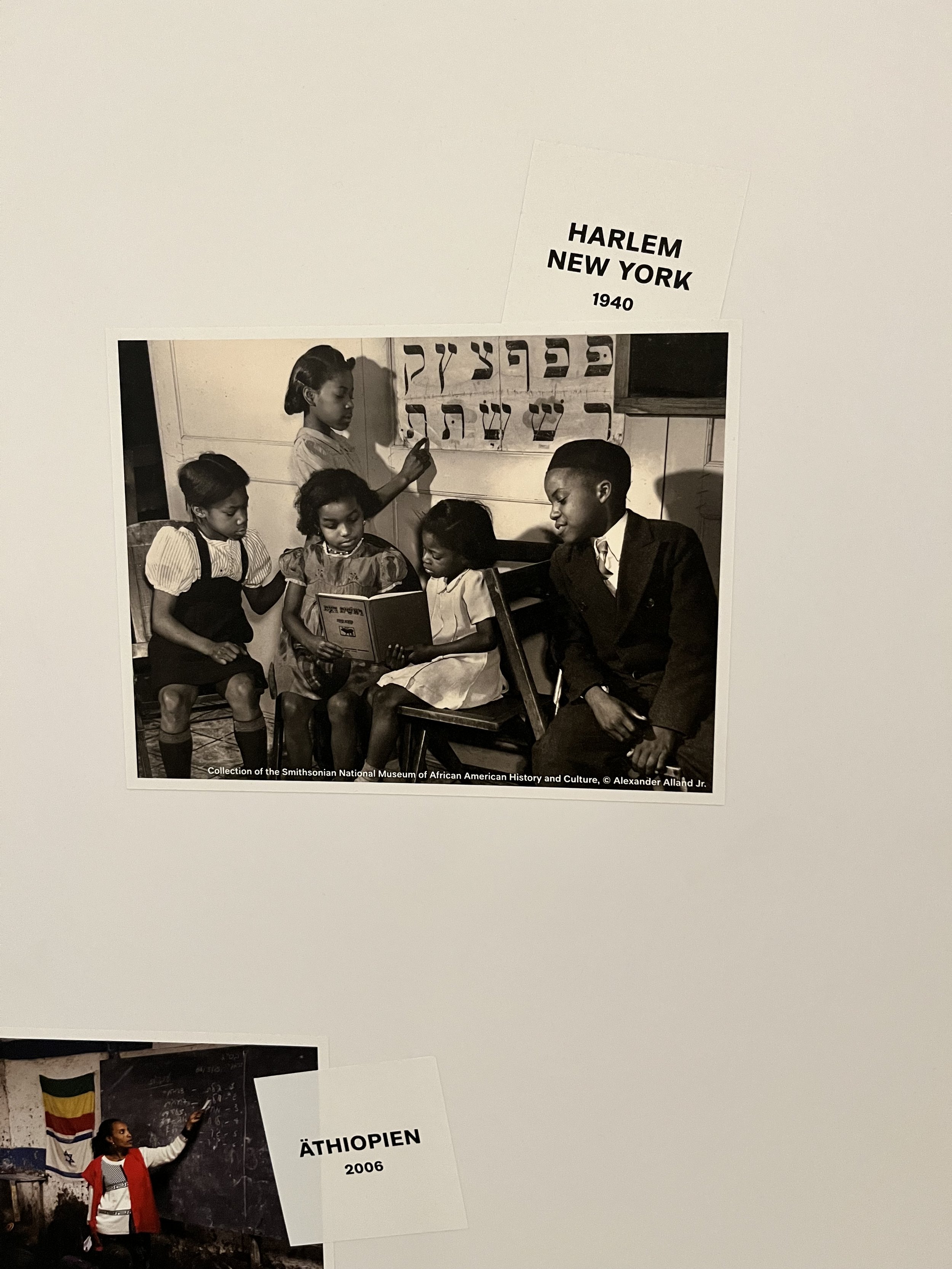

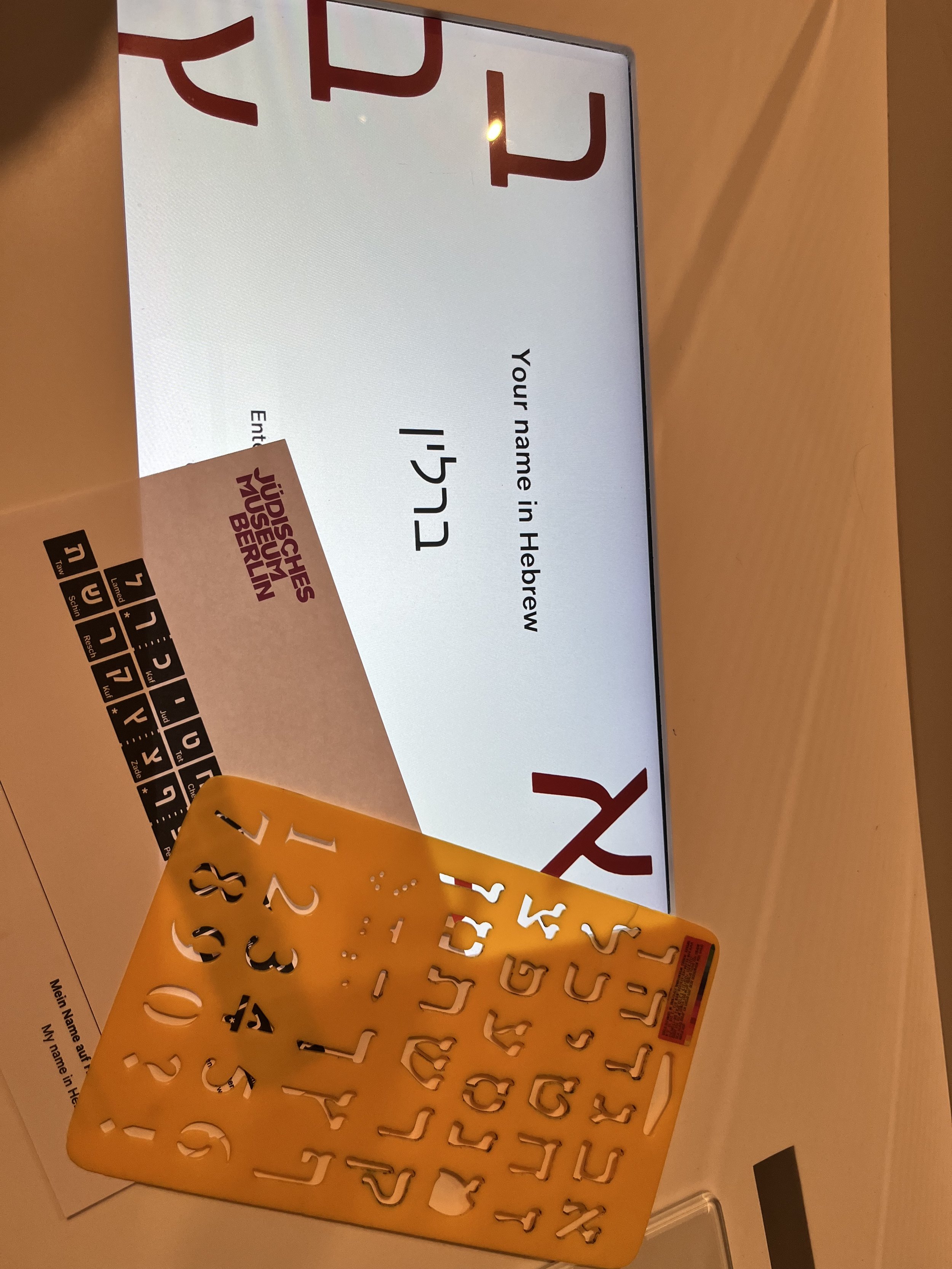
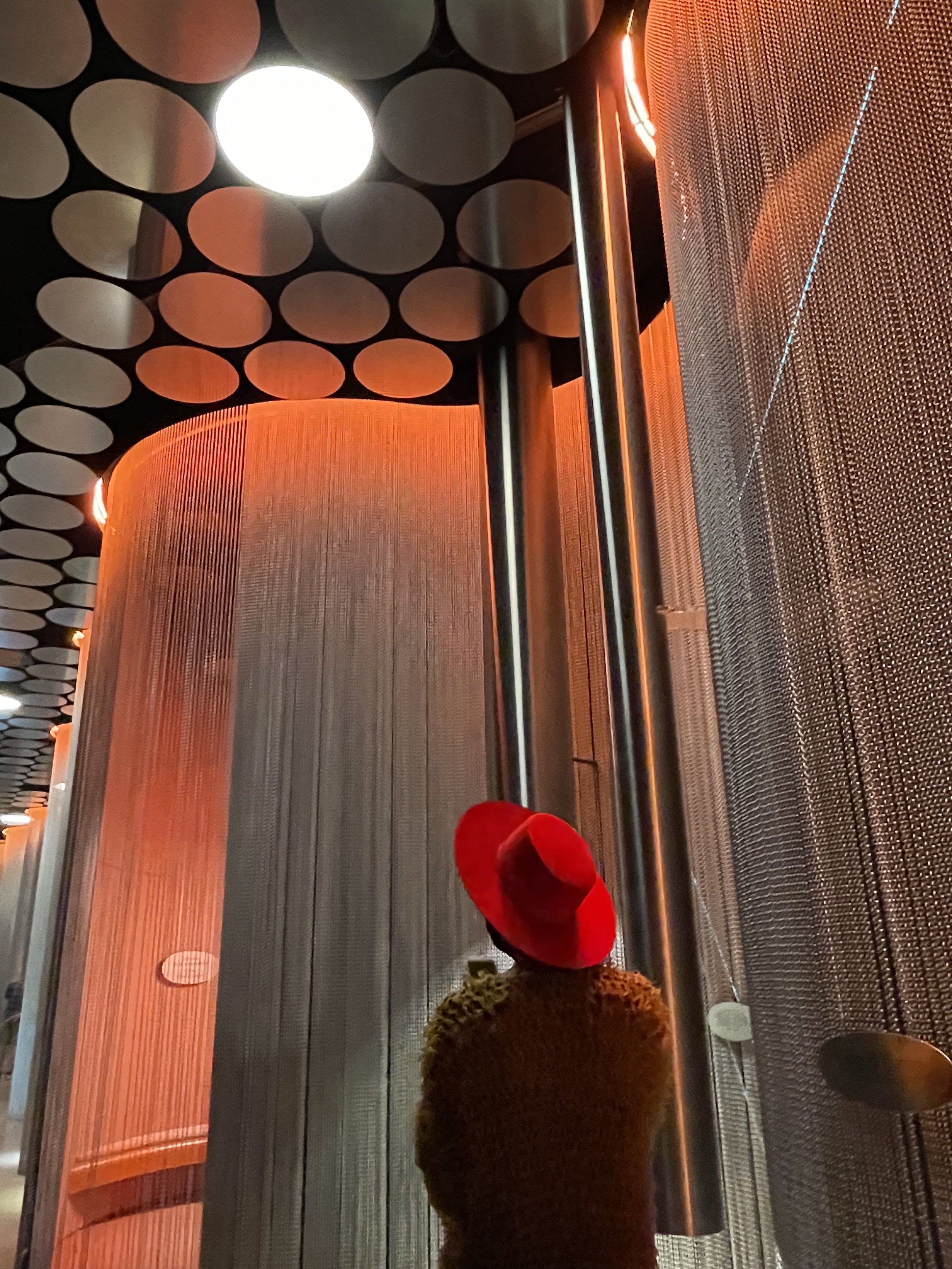
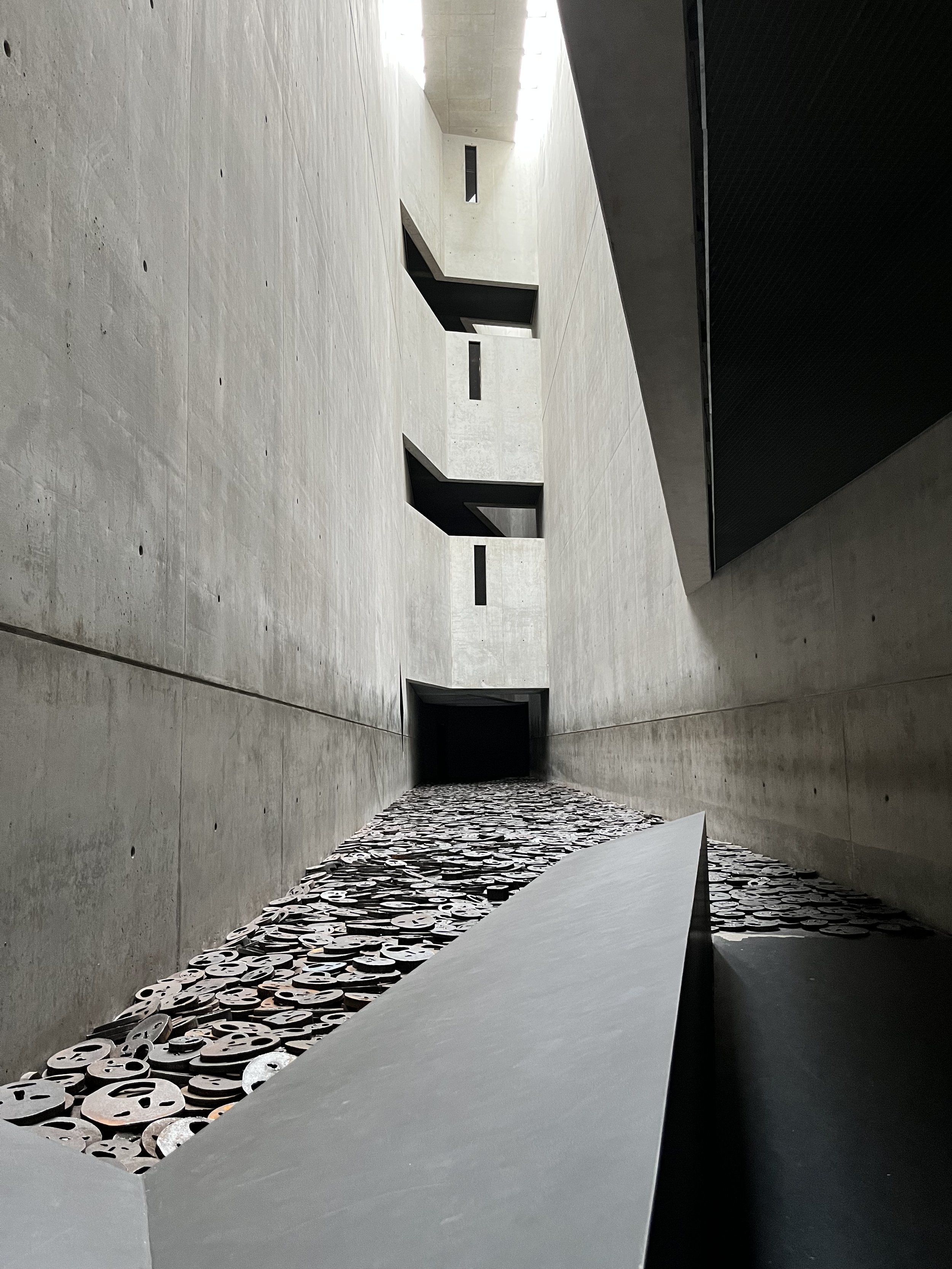
I was able to connect my love for Sunday family dinners and music to that of our Jewish friends by waving my hand over a cylinder speaker and listening to the rhythmic chants of the Torah and understanding meal preparation on the Sabbath. My desire for marriage became a topic of discussion as I learned how a bride and groom celebrate their jubilant love through the sound of a shofar!
These interactive experiences places value on the day to day life of Jewish people and therefore acknowledges and makes space for the humanity of a people who were once dehumanized in the context of the nation state that now celebrates them.
One of my favorite interactive experiences didn’t require me to do anything but walk (a privilege that I realize I have). Architect Daniel Libeskind created empty shafts in several parts of the building. These shafts are called “voids” and expand vertically through every level of the museum, to represent destruction, loss and absence.
The “Memory Void” is graced with a sensory overload experience by Israeli artist Menashe Kadishman. Fallen Leaves (Shalekhet) is an installation that has **more than 10,000 steel faces spread across the floor; these faces represent the innocent souls who are impacted by war and violence. Without a name, without a picture I was able to feel the stillness, the uneasiness, the unstable, the overwhelming loud yet uncomfortable solitude of state sanctioned violence. I heard the power of my footsteps on these faces that I hadn’t known. I saw the endless river of faces that were trapped in this void. This is the power of art and this is how we reconcile our wrongs; we create space to tell those stories and allow people to experience them for themselves.
Reconciliation
Creative peace initiatives are key components to international peace and conflict resolution. Think-tanks like the International Conflict Resolution Center in Washington D.C. release studies that reveal peaceful solutions, in conflict countries, have higher success rates than violent strategies like war. Museums are creative institutions that have the power to tell stories that can not only bridge the gaps between divided groups of people but SAVE LIVES.
The JMB boldly captures Germany’s understanding of its wrongs which could be why Germany issued reparations to its Jewish population in 1952. By intentionally acknowledging the evolution of the Jewish experience and German’s dependence on this relationship, there is a centering of humanity and wellbeing of Jewish folks.
By telling the story of Jews and Germany the day to day experiences of individual peoples are improved; institutions with power have to RECOGNIZE the VALUE of the people.
There is an entire floor of the museum dedicated to anti-semitism and how it impacts the progression and effectiveness of society socially AND economically. There are video exhibitions that talk about the importance of removing anti-semitic buildings from public places and why they should be included in controlled environments like museums.
Meanwhile we are still trying to figure out why “Jefferson” is a street in damn near every American city. We are still trying to convince folks that the confederate flag is not just the stars and stripes collaged differently.
My biggest take away from the museum was, “recognition of the collective is reconciliation”.
The recognition of the entire Jewish diaspora forces Germany and other European nations to reckon with itself outside of the Jewish population and therefore innately places the country in place where it has to call itself on its shit. It forces the world to understand its role in dehumanization of Jews because the focus of the art is on the diaspora not just one group in one place.
On the top floor of the exhibition there was a wish tree, a place where visitors wrote out a wish they have and display it on the imitated weeping willow. My wish came with ease; “my wish is for the United States to reckon with its past, to learn form this institution how to see her people, love her people and actively support the humanity of her people.”
The people I’m talking about are Black folks! The queer, trans, abled and impaired Black folks. For the Black folks on Wall street and the ones on D St. To see a people and support the humanity of a people are different.
Museums are cultural hubs of our WORLD, they reveal what we value and acknowledge globally. The Jewish museum of Berlin shows us how Jewish folks impacted the world and they uphold the cultural wealth of the people by institutionalizing it. If Hitler can change the hearts and minds of people through art for bad then surely 2022 citizens can change the hearts and minds of folks for good.
Art is indeed a form of reconciliation and one that can institutionalize peace.

